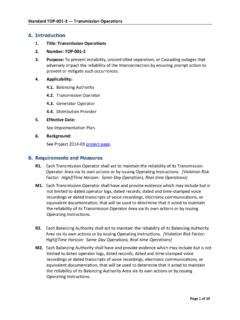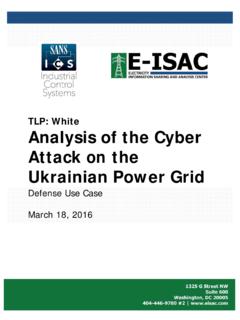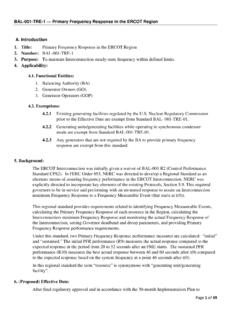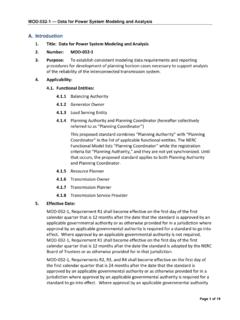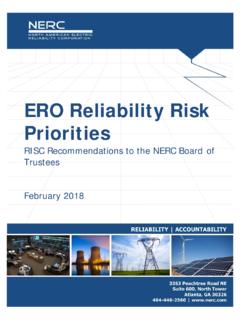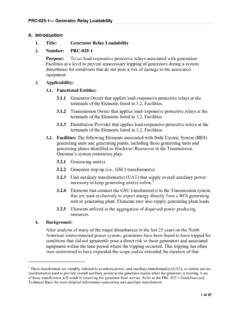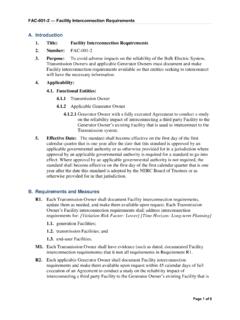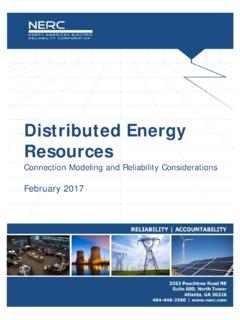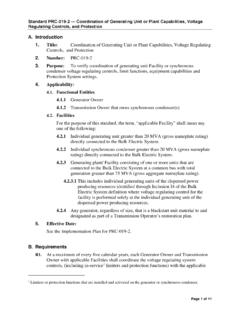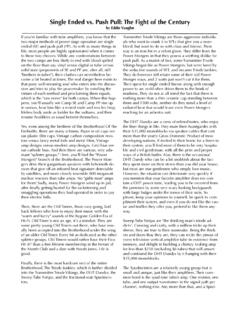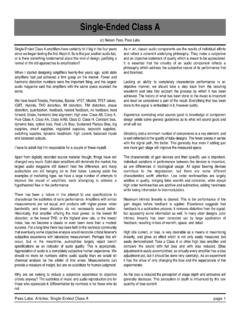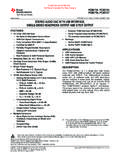Transcription of B. Requirements and Measures - NERC
1 Generator Operation for Maintaining Network Voltage Schedules 1 A. Introduction 1. Title: Generator Operation for Maintaining Network Voltage Schedules 2. Number: 3. Purpose: To ensure generators provide reactive support and voltage control, within generating Facility capabilities, in order to protect equipment and maintain reliable operation of the Interconnection. 4. Applicability: Generator Operator Generator Owner 5. Effective Dates See Implementation Plan. B. Requirements and Measures R1. The Generator Operator shall operate each generator connected to the interconnected transmission system in the automatic voltage control mode (with its automatic voltage regulator (AVR) in service and controlling voltage) or in a different control mode as instructed by the Transmission Operator unless: 1) the generator is exempted by the Transmission Operator, or 2) the Generator Operator has notified the Transmission Operator of one of the following: [Violation Risk Factor: Medium] [Time Horizon.]
2 Real-time operations ] That the generator is being operated in start-up,1 shutdown,2 or testing mode pursuant to a Real-time communication or a procedure that was previously provided to the Transmission Operator; or That the generator is not being operated in automatic voltage control mode or in the control mode that was instructed by the Transmission Operator for a reason other than start-up, shutdown, or testing. M1. The Generator Operator shall have evidence to show that it notified its associated Transmission Operator any time it failed to operate a generator in the automatic voltage control mode or in a different control mode as specified in Requirement R1.
3 If a generator is being started up or shut down with the automatic voltage control off, or is being tested, and no notification of the AVR status is made to the Transmission Operator, the Generator Operator will have evidence that it notified the Transmission Operator of its procedure for placing the unit into automatic voltage control mode as required in Requirement R1. Such evidence may include, but is not limited to, dated evidence of transmittal of the procedure such as an electronic message or a transmittal letter with the procedure included or attached. If a generator is exempted, the Generator Operator shall also have evidence that the generator is exempted from being in automatic voltage control mode (with its AVR in service and controlling voltage).
4 1 Start-up is deemed to have ended when the generator is ramped up to its minimum continuously sustainable load and the generator is prepared for continuous operation. 2 Shutdown is deemed to begin when the generator is ramped down to its minimum continuously sustainable load and the generator is prepared to go offline. Generator Operation for Maintaining Network Voltage Schedules 2 R2. Unless exempted by the Transmission Operator, each Generator Operator shall maintain the generator voltage or Reactive Power schedule3 (within each generating Facility s capabilities4) provided by the Transmission Operator, or otherwise shall meet the conditions of notification for deviations from the voltage or Reactive Power schedule provided by the Transmission Operator.
5 [Violation Risk Factor: Medium] [Time Horizon: Real-time operations ] When a generator s AVR is out of service or the generator does not have an AVR, the Generator Operator shall use an alternative method to control the generator reactive output to meet the voltage or Reactive Power schedule provided by the Transmission Operator. When instructed to modify voltage, the Generator Operator shall comply or provide an explanation of why the schedule cannot be met. Generator Operators that do not monitor the voltage at the location specified in their voltage schedule shall have a methodology for converting the scheduled voltage specified by the Transmission Operator to the voltage point being monitored by the Generator Operator.
6 M2. In order to identify when a generator is deviating from its schedule, the Generator Operator will monitor voltage based on existing equipment at its Facility. The Generator Operator shall have evidence to show that the generator maintained the voltage or Reactive Power schedule provided by the Transmission Operator, or shall have evidence of meeting the conditions of notification for deviations from the voltage or Reactive Power schedule provided by the Transmission Operator. Evidence may include, but is not limited to, operator logs, SCADA data, phone logs, and any other notifications that would alert the Transmission Operator or otherwise demonstrate that the Generator Operator complied with the Transmission Operator s instructions for addressing deviations from the voltage or Reactive Power schedule.
7 For Part , when a generator s AVR is out of service or the generator does not have an AVR, a Generator Operator shall have evidence to show an alternative method was used to control the generator reactive output to meet the voltage or Reactive Power schedule provided by the Transmission Operator. For Part , the Generator Operator shall have evidence that it complied with the Transmission Operator s instructions to modify its voltage or provided an explanation to the Transmission Operator of why the Generator Operator was unable to comply with the instruction. Evidence may include, but is not limited to, operator logs, SCADA data, and phone logs.
8 For Part , for Generator Operators that do not monitor the voltage at the location specified on the voltage schedule, the Generator Operator shall demonstrate the methodology for converting the scheduled voltage specified by the Transmission Operator to the voltage point being monitored by the Generator Operator. 3 The voltage or Reactive Power schedule is a target value with a tolerance band or a voltage or Reactive Power range communicated by the Transmission Operator to the Generator Operator. 4 Generating Facility capability may be established by test or other means, and may not be sufficient at times to pull the system voltage within the schedule tolerance band.
9 Also, when a generator is operating in manual control, Reactive Power capability may change based on stability considerations. Generator Operation for Maintaining Network Voltage Schedules 3 R3. Each Generator Operator shall notify its associated Transmission Operator of a status change on the AVR, power system stabilizer, or alternative voltage controlling device within 30 minutes of the change. If the status has been restored within 30 minutes of such change, then the Generator Operator is not required to notify the Transmission Operator of the status change. [Violation Risk Factor: Medium] [Time Horizon: Real-time operations ] M3.
10 The Generator Operator shall have evidence it notified its associated Transmission Operator within 30 minutes of any status change identified in Requirement R3. If the status has been restored within the first 30 minutes, no notification is necessary. R4. Each Generator Operator shall notify its associated Transmission Operator within 30 minutes of becoming aware of a change in reactive capability due to factors other than a status change described in Requirement R3. If the capability has been restored within 30 minutes of the Generator Operator becoming aware of such change, then the Generator Operator is not required to notify the Transmission Operator of the change in reactive capability.
